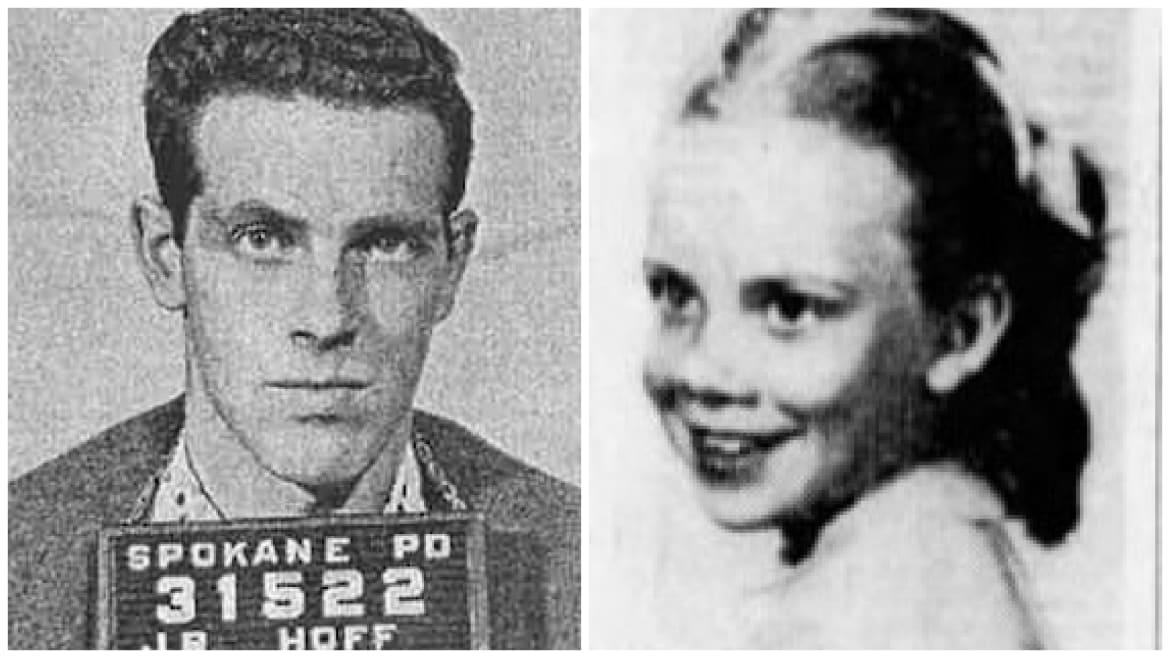Candy Rogers Was Murdered in 1959. Cops Finally Know Who Did It.

For more than 60 years it was a haunting mystery: Who killed a 9-year-old girl who vanished while out selling mints in Spokane, Washington, and who was found raped and strangled to death with her own slip two weeks later?
The unsolved mystery was handed down as a cold case from one generation of retiring detectives to the next. But authorities revealed this week that they have finally cracked the case of Candy Rogers, using the modern marvels of DNA.
“We are tenacious. We will never give up,” Spokane Police Chief Craig Meidl said at a news conference announcing the murder had been solved.
Even though investigators say they know who killed Candy, there was no arrest: the suspect, Army deserter John Reigh Hoff, who went on to commit a similar assault, died by suicide in 1970.
Spokane Major Crimes Detective Zac Storment described Candy’s death as the “Mount Everest” of the department’s cold cases— “the one that we could never seem to overcome. But at the same time, nobody ever forgot.”
Candy disappeared in March 1959 while out selling Camp Fire mints in her neighborhood. When she had not returned by nightfall, a massive search was launched. The only trace of her were boxes of the same mints she had been selling, on a path leading away from her home.
Two weeks into the search—in which three airmen from Fairchild Air Force base were killed when their helicopter hit power lines and crashed—two other airmen hunting in the woods found a pair of girl’s shoes.
“On their return to the base they continued to talk about their discovery and wondered if the shoes could be related to the search for Candy,” police said in a statement. “They reported their findings, and as daylight broke the next morning a search party descended on the area. Only a few minutes into the search the body of Candy was discovered buried under a shallow layer of brush and pine needles.”
The discovery rocked the community.
“It really changed the way Spokane worked back then and how children were allowed to run free or not,” Spokane Police Detective Brian Hammond told KREM-TV in 2007.
Now that police had a body, the search for a killer kicked into gear. But back then, there was no registered sex offender program, and only limited forensic testing that made it difficult for police fielding hundreds of tips to develop real evidence.
Grape gum found on Rogers’ body appeared to link her murder to Hugh Bion Morse, a serial killer known to favor that flavor, who allegedly killed at least four women. He denied it, and DNA evidence would clear him decades later. Another potential suspect, Alfred Graves, who collected clippings about raped women and children, had died by suicide the day that Rogers’ body was uncovered.
As the years passed, however, technology progressed. By 2021, police across the country were regularly using DNA samples that genealogical sleuthing to close cases that seemed like they would never be solved.
Early in the year, DNA testing of a well-preserved semen sample from Candy’s clothing conducted by a Texas company called Othram revealed three brothers as potential matches. One of them, John Reigh Hoff, had a daughter who submitted a DNA sample in September narrowed the hunt.
“The results showed it was 2.9 million times more likely that Hoff’s daughter’s DNA was related to the recovered specimen than the general population,” police said.
Based on that, investigators obtained a warrant to unearth Hoff’s grave, which was in the same cemetery where Rogers was buried. DNA collected from his body on Sept. 23 conclusively indicated—with a probability threshold of 25 quintillion—that the semen on Candy’s clothing came from him.
Hoff’s background provided corroboration. Two years after Candy was murdered, Hoff committed a similar attack—ripping off a woman’s clothes, using them to tie her up, and trying to strangle her. She survived, and Hoff spent six months in jail. After being expelled from the military he worked as a door-to-door salesman before taking his own life in 1970 at the age of 31.
Retired Spokane police Capt. Richard Olberding, who was one of the officers who uncovered Candy’s body, attended the Friday news conference where the DNA results were announced.
“I thank God that I lived long enough to see the end of this case,” he told the Spokesman-Review.
Got a tip? Send it to The Daily Beast here
Get our top stories in your inbox every day. Sign up now!
Daily Beast Membership: Beast Inside goes deeper on the stories that matter to you. Learn more.

